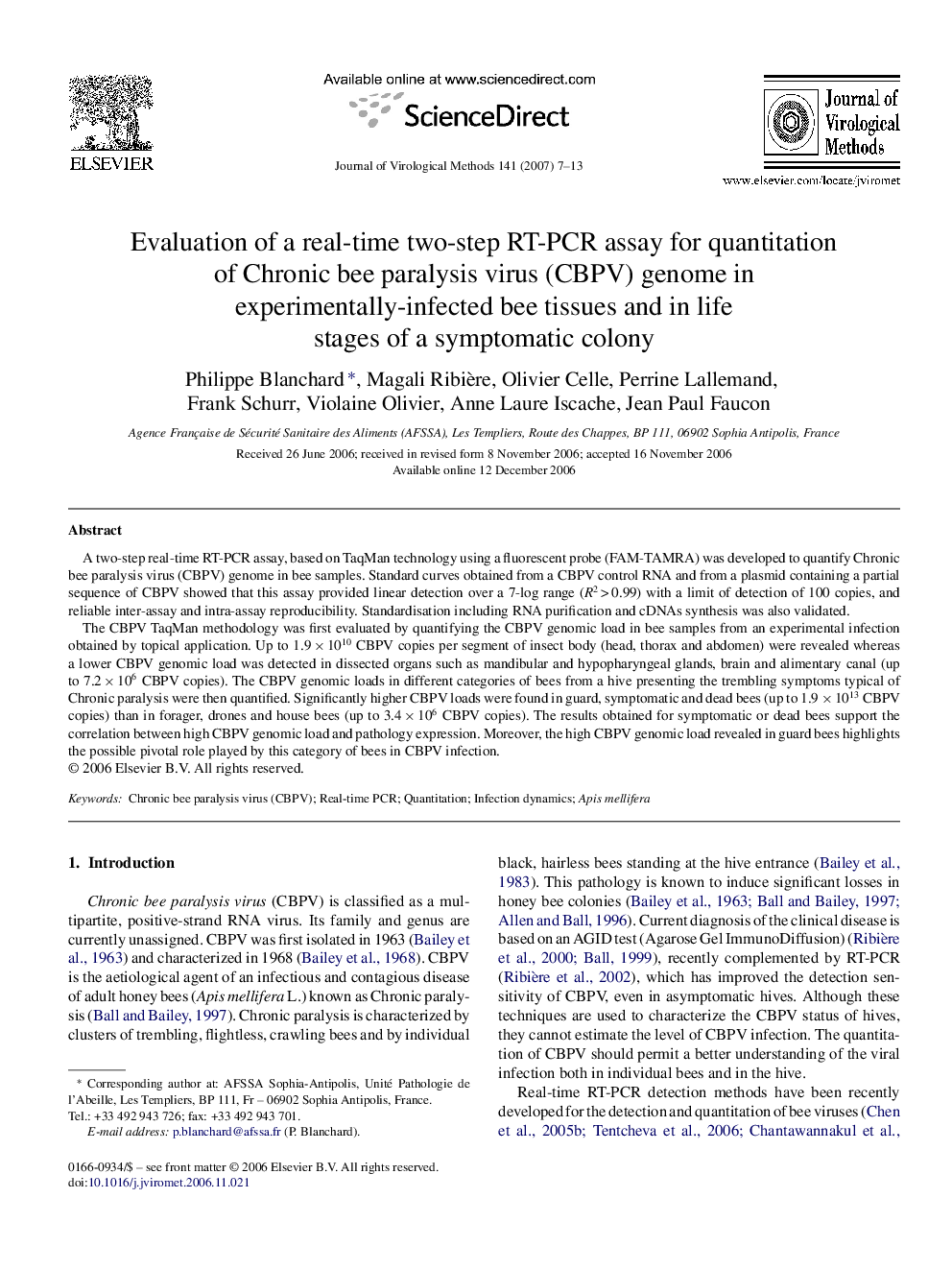| Article ID | Journal | Published Year | Pages | File Type |
|---|---|---|---|---|
| 3408167 | Journal of Virological Methods | 2007 | 7 Pages |
A two-step real-time RT-PCR assay, based on TaqMan technology using a fluorescent probe (FAM-TAMRA) was developed to quantify Chronic bee paralysis virus (CBPV) genome in bee samples. Standard curves obtained from a CBPV control RNA and from a plasmid containing a partial sequence of CBPV showed that this assay provided linear detection over a 7-log range (R2 > 0.99) with a limit of detection of 100 copies, and reliable inter-assay and intra-assay reproducibility. Standardisation including RNA purification and cDNAs synthesis was also validated.The CBPV TaqMan methodology was first evaluated by quantifying the CBPV genomic load in bee samples from an experimental infection obtained by topical application. Up to 1.9 × 1010 CBPV copies per segment of insect body (head, thorax and abdomen) were revealed whereas a lower CBPV genomic load was detected in dissected organs such as mandibular and hypopharyngeal glands, brain and alimentary canal (up to 7.2 × 106 CBPV copies). The CBPV genomic loads in different categories of bees from a hive presenting the trembling symptoms typical of Chronic paralysis were then quantified. Significantly higher CBPV loads were found in guard, symptomatic and dead bees (up to 1.9 × 1013 CBPV copies) than in forager, drones and house bees (up to 3.4 × 106 CBPV copies). The results obtained for symptomatic or dead bees support the correlation between high CBPV genomic load and pathology expression. Moreover, the high CBPV genomic load revealed in guard bees highlights the possible pivotal role played by this category of bees in CBPV infection.
